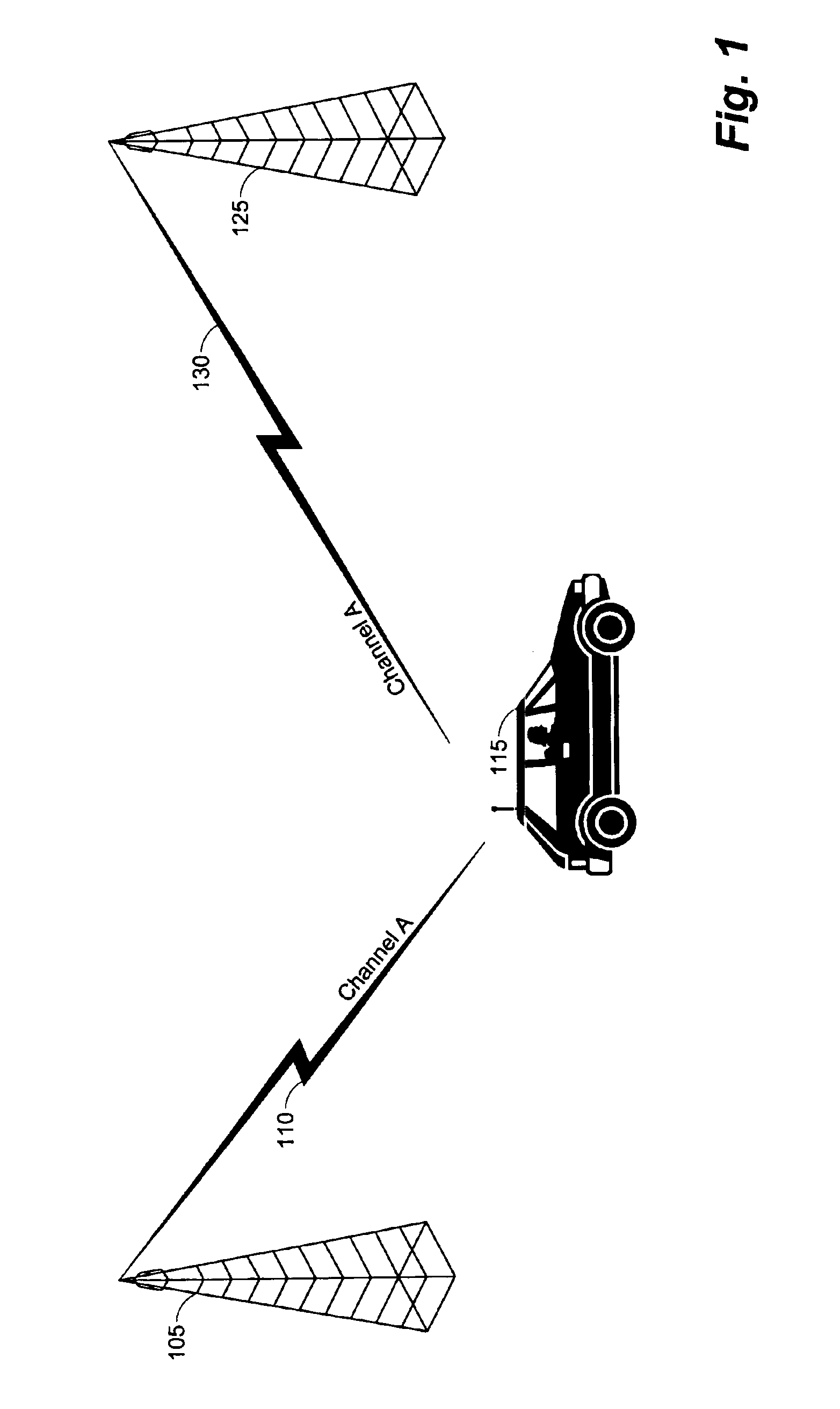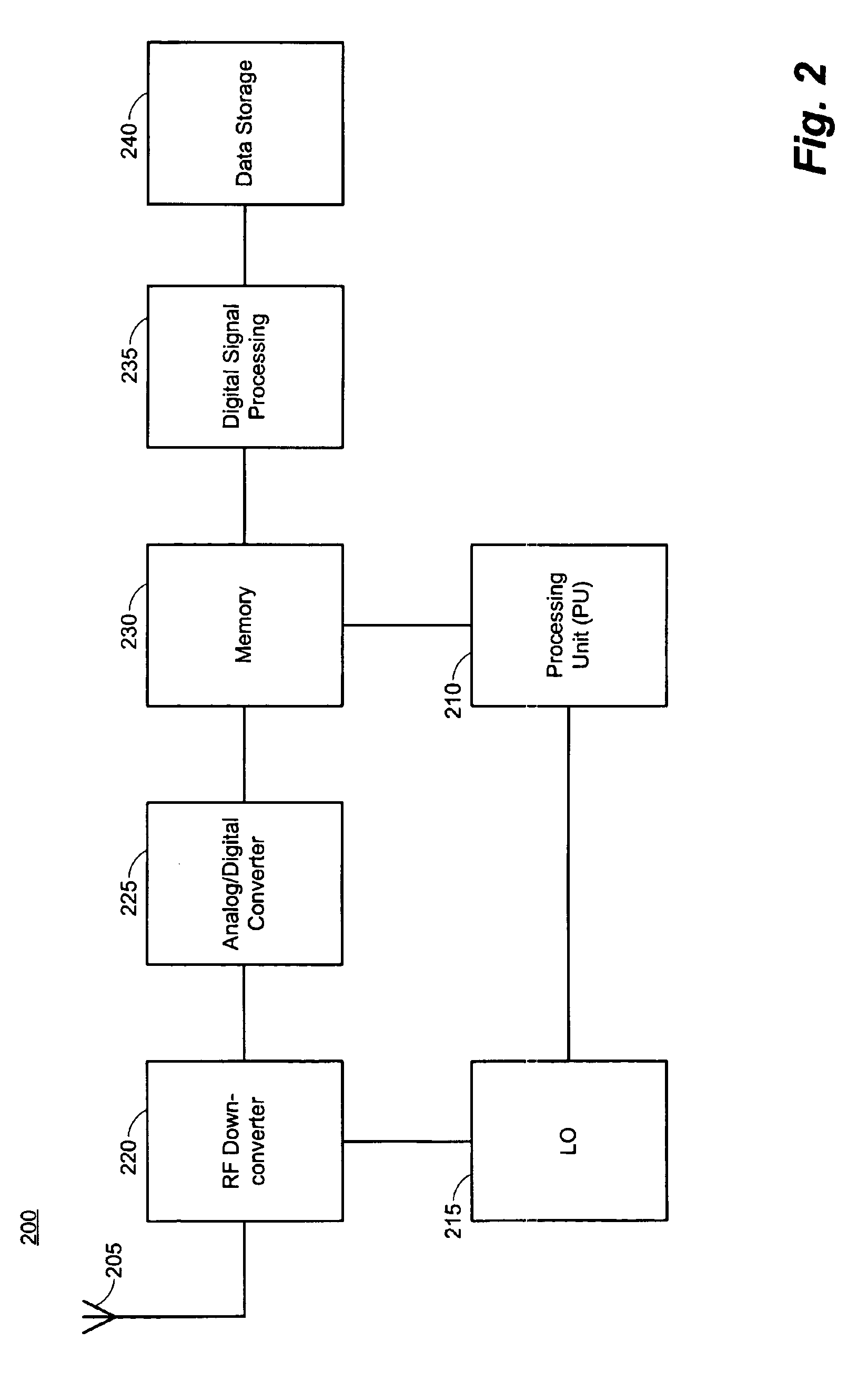System and method for identifying co-channel interference in a radio network
- Summary
- Abstract
- Description
- Claims
- Application Information
AI Technical Summary
Benefits of technology
Problems solved by technology
Method used
Image
Examples
Embodiment Construction
[0035]One aspect of the present invention is a wireless communication test set (WCTS) that is capable of receiving and processing signals over a wide frequency tuning range, as well as for a variety of cellular air interface protocols. Advantageously, this aspect of the present invention improves the ability to receive signals within a cell and analyze the signal for co-channel interference.
[0036]Now turning to the figures where like numbers refer to like elements throughout the several views, various embodiments and aspects of the present invention will be described in more detail. Although the present invention may be applied within a variety of cellular systems having varying technology, the present invention will by primarily described as operating within a GSM cellular network. Any variants that are necessary to utilize the present invention within a different cellular network are also described.
[0037]FIG. 1 is a system diagram illustrating co-channel interference within a cell...
PUM
 Login to View More
Login to View More Abstract
Description
Claims
Application Information
 Login to View More
Login to View More - R&D
- Intellectual Property
- Life Sciences
- Materials
- Tech Scout
- Unparalleled Data Quality
- Higher Quality Content
- 60% Fewer Hallucinations
Browse by: Latest US Patents, China's latest patents, Technical Efficacy Thesaurus, Application Domain, Technology Topic, Popular Technical Reports.
© 2025 PatSnap. All rights reserved.Legal|Privacy policy|Modern Slavery Act Transparency Statement|Sitemap|About US| Contact US: help@patsnap.com



